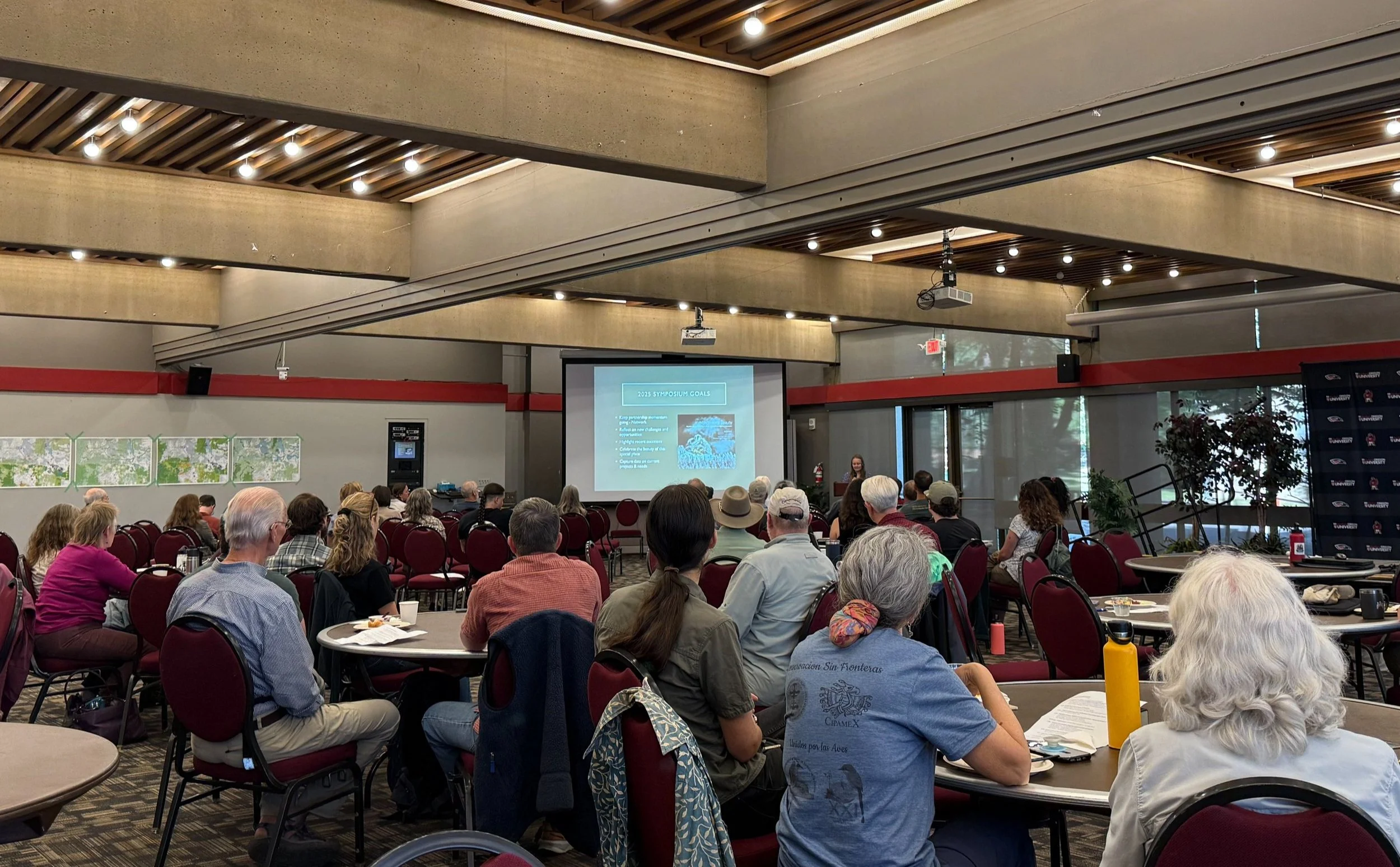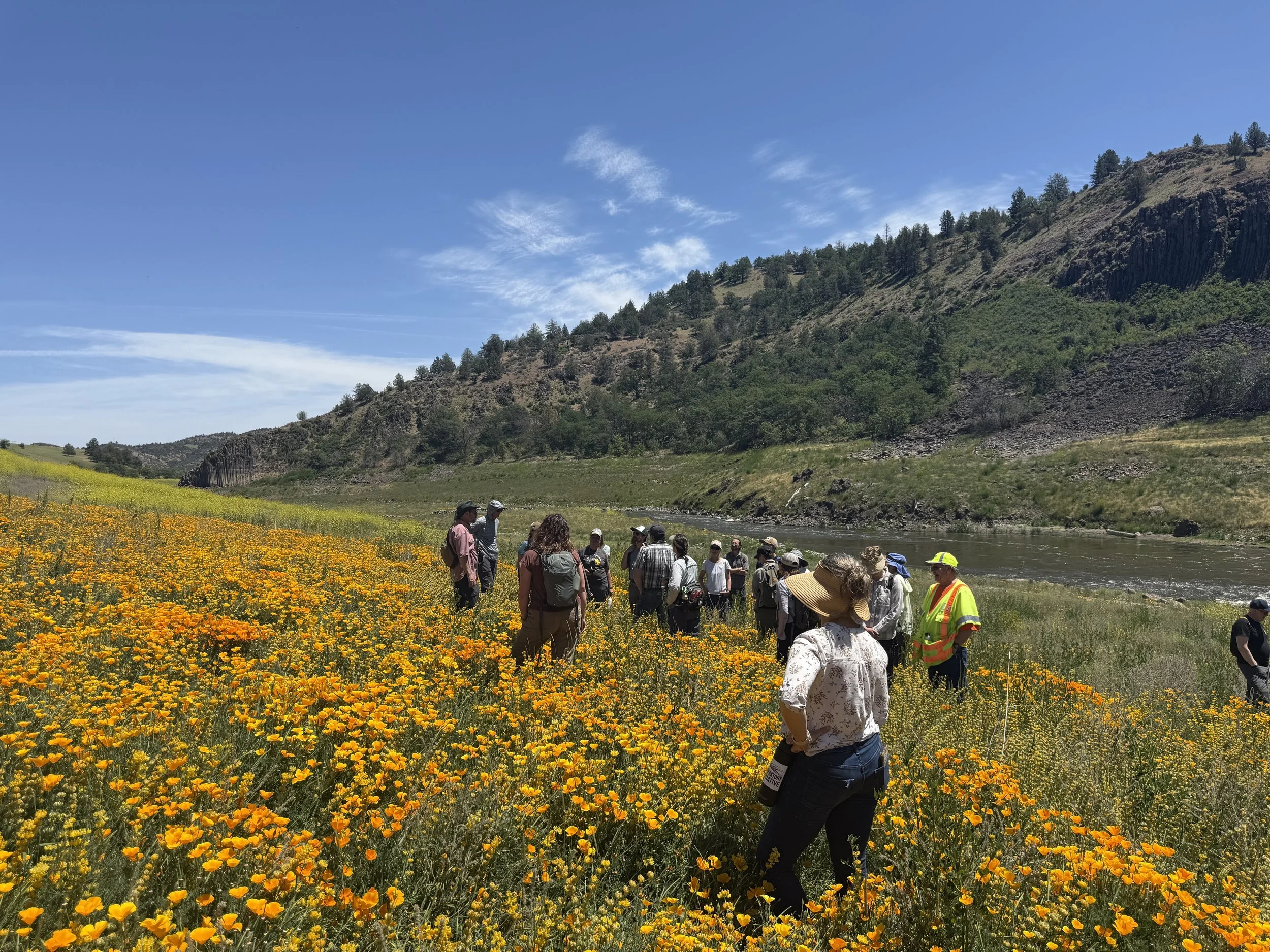Building partnerships to promote wildlife migration & landscape connectivity
Written by Michael Dotson in June 2025
KS Wild is helping build bridges—both literally and figuratively—to advance wildlife connectivity in our little corner of the world.
Where the Cascade, Klamath, & Siskiyou ranges converge near the Oregon-California border, biodiversity abounds. Not only is the region home to the Cascade-Siskiyou National Monument (the first and only national monument set aside for the specific protection of biodiversity), but it is also home to a unique “land bridge” known as the Siskiyou Crest.
The Siskiyou Crest is unique for a mountain range on the West Coast, as it runs in an east-west direction as opposed to north-south (like the Sierra and Cascade ranges). This vital, natural corridor helps connect the Coast Range with the Cascades further inland, serving as a crucial migratory pathway for a wide range of species. The backdrop of the Siskiyou Crest and Cascade-Siskiyou National Monument makes for a great place to bring together wildlife advocates, Tribal representatives, scientists, land managers, transportation planners, and state/federal wildlife agencies to discuss large-landscape and habitat connectivity.
This May (2025), KS Wild and partners at the Selberg Institute, Southern Oregon Land Conservancy, Pacific Forest Trust, and Defenders of Wildlife cohosted the latest installment of the Cascade-Klamath-Siskiyou Connectivity Symposium. It’s been three years since our last connectivity symposium at Southern Oregon University, and this year more than 80 individuals participating and representing more than 45 organizations/institutions involved. Tribal members from the Siletz, Shasta, and Yurok Tribes also took part and shared their perspectives on reconnecting with their historic homelands, some of which they were forcefully removed from generations ago.
This year’s Connectivity Symposium at SOU was expanded to a two-day affair, where attendees listened in on day one to talks ranging from Tribal land trusts to the recent Klamath Dam removal and ongoing restoration. Guests were also treated to an extensive presentation from the Southern Oregon Wildlife Crossing Coalition, SOU’s Environmental Science Program, and Oregon Department of Transportation, which highlighted the partnership that successfully secured $38 million from federal and state funding to build Oregon’s first wildlife overpass on Interstate 5 just south of Ashland.
On day two, we capped off the event with a field trip to explore two very important connectivity sites – the proposed Mariposa Preserve wildlife overcrossing on Interstate 5 (just north of the Oregon-California border), as well as the recently undammed stretch of the Klamath River outside of Hornbrook, California. Looking down from an overlook next to Interstate 5, we heard from ODOT leaders about the agency’s plans for engineering and site preparation, as well as how the agency addressed increasing costs for the construction materials. The good news is that despite the $38-40 million price tag for the Mariposa Preserve Wildlife Overpass, ODOT and partners are likely to find significant savings over the course of the project which could cut as much as 25% or more from the cost. Construction on the wildlife overpass could start as early as 2027, if plans and engineering studies go accordingly.
Many KS Wild staff in attendance were visiting the undammed portions of the Klamath River for the first time since 4 dams came down in the fall of 2024. We were left mesmerized by the abundant growth of native flowers and plants in portions of the old Irongate Reservoir, and we happened to visit during what many considered an early “super-bloom.” It’s definitely a sight to see, having a free-flowing river once again cutting through the landscape where a once stagnant reservoir stood. At the old Irongate Reservoir site we heard from Josh Chenowith, restoration specialist with the Yurok Tribe, that the Tribes and contracting partners had gathered and planted upwards of 17-19 BILLION native plant seeds (which is approximately 15 tons of seed)!
It's KS Wild’s goal to work with partners and continue collecting data and information about barriers to migration in our region, as well as projects that are trying to improve wildlife passage/connectivity. There are so many great organizations and community-led efforts to enhance wildlife habitat and corridors in our region that we can’t cover them all in a span of two days. With the help of some potential funders, KS Wild and our symposium organizing team are hoping to keep the momentum going over the next couple years by hosting smaller presentations and talks with local groups and land stewards. One area where KS Wild and partners will be looking to build capacity and partnership is around monitoring. What we heard throughout the connectivity symposium and field trip was a need to monitor and record data long-term to see the beneficial impacts of various projects. From post-dam removal fish surveys to streambank restoration to camera traps that monitor which animals are using the future wildlife overpass, there seems to be limited support for monitoring and understanding what’s happening after these major restoration efforts.
It remains to be seen when we host the next Connectivity Symposium at SOU, but it feels like every 3-4 years we have significant progress updates to share from various projects and organizations. I imagine we’ll look at the upcoming timeline for the construction of the Mariposa Preserve and find opportunities post-construction to reconvene. In the meantime, the public can check out progress on the wildlife overpass via SOWCC’s social feeds and stay keep informed of Tribal restoration efforts on the Klamath from groups like Ridges 2 Riffles Indigenous Conservation Group and the Yurok Tribe.
Stay up to date with interstate 5’s first-ever wildlife crossing
Click here to follow the Southern Oregon Wildlife Crossing Coalition on Facebook where updates will be posted for presentations, groundbreaking, and information regarding the build.





